Type 1s are precise, conscientious, careful organizers.
Reading time: 5 minutes

Gregory Park, Ph.D.
Author
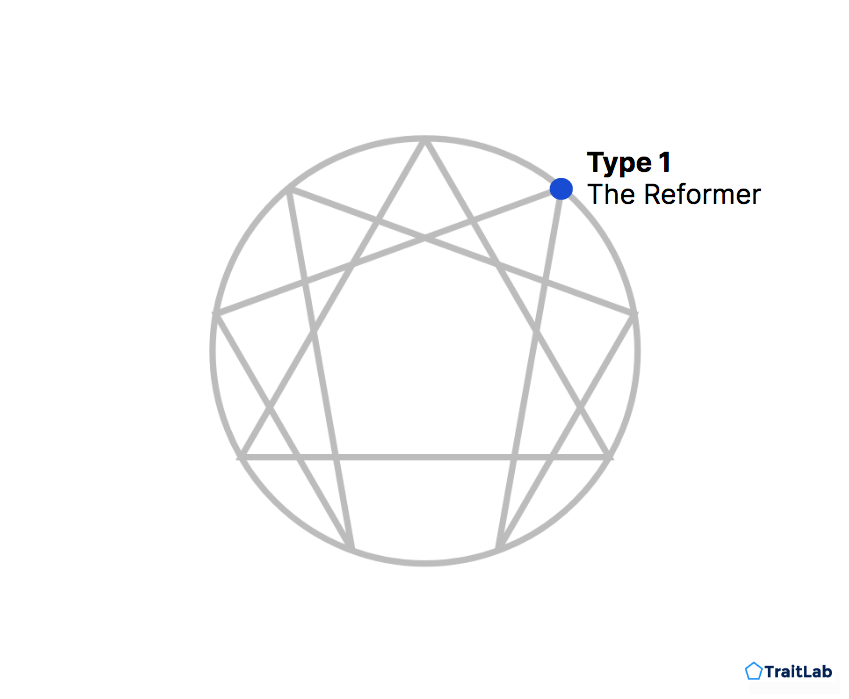
In the Enneagram framework, Type 1s — also known as Reformers or simply Ones — are precise, conscientious, careful organizers. They are often highly detail-oriented and principled rule-followers.
Hook et al. (2021) describe Type 1s’ core desire as a need to be perfect. At their worst, Type 1s can veer into unrealistic expectations of themselves and others.
At times, Type 1s may be motivated by a core fear of being imperfect, ineffective, or immoral.

Do you know your closest Enneagram type?
See how your personality compares to all nine types with TraitLab's comprehensive assessment.
Others might describe Type 1s as
The wordcloud below shows the top 100 words used to describe Type 1s. Bigger words describe the more prominent aspects of most Type 1s.
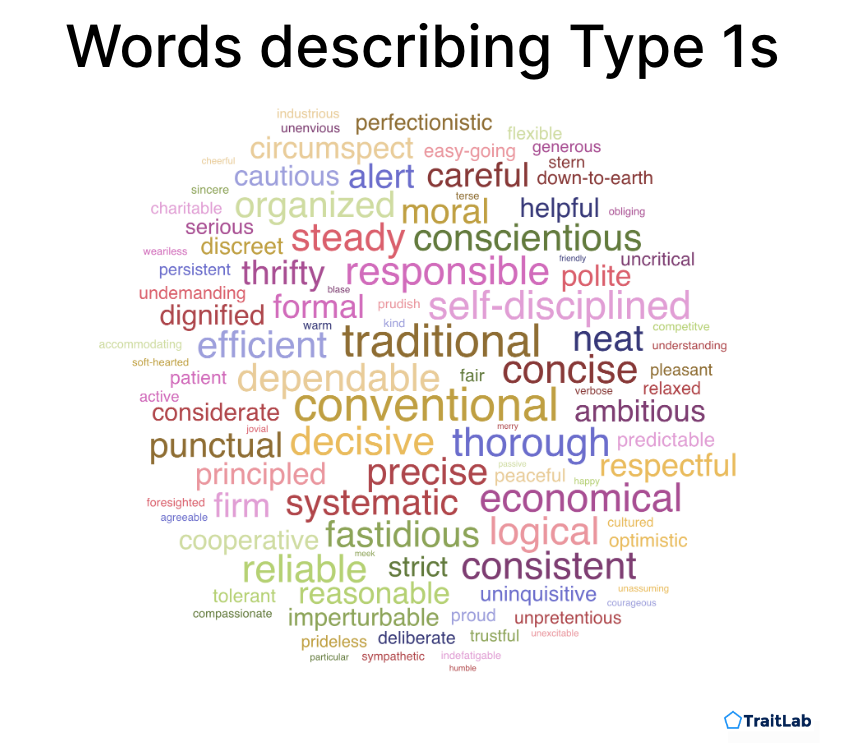
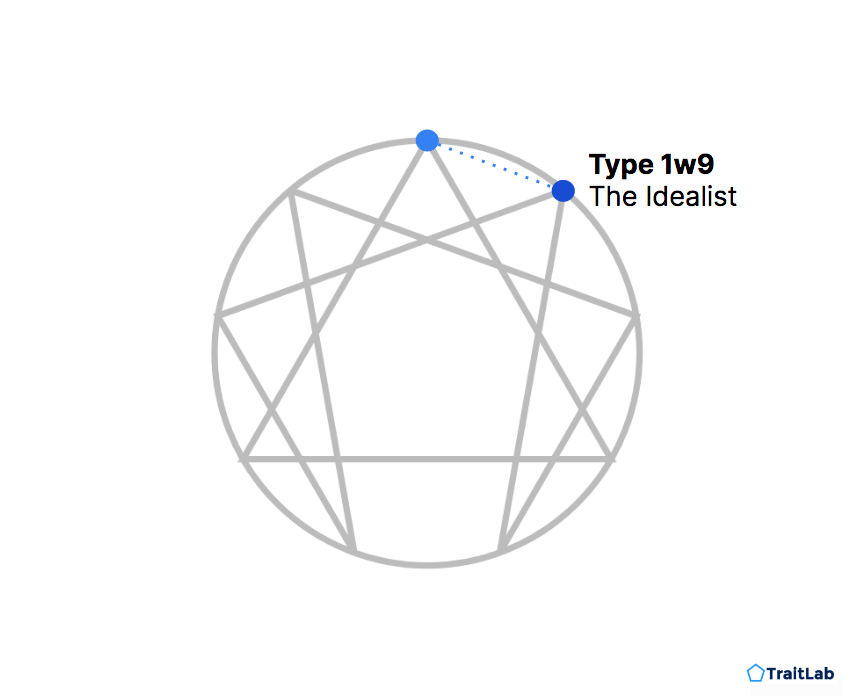
Type 1s with a 9 wing, or 1w9s, take on some characteristics of Type 9: The Peacemaker, including greater openness to ideas and interpersonal warmth. Type 1w9s often have a softer, gentler, and more open-minded approach to maintaining balance in their inner and outer world.
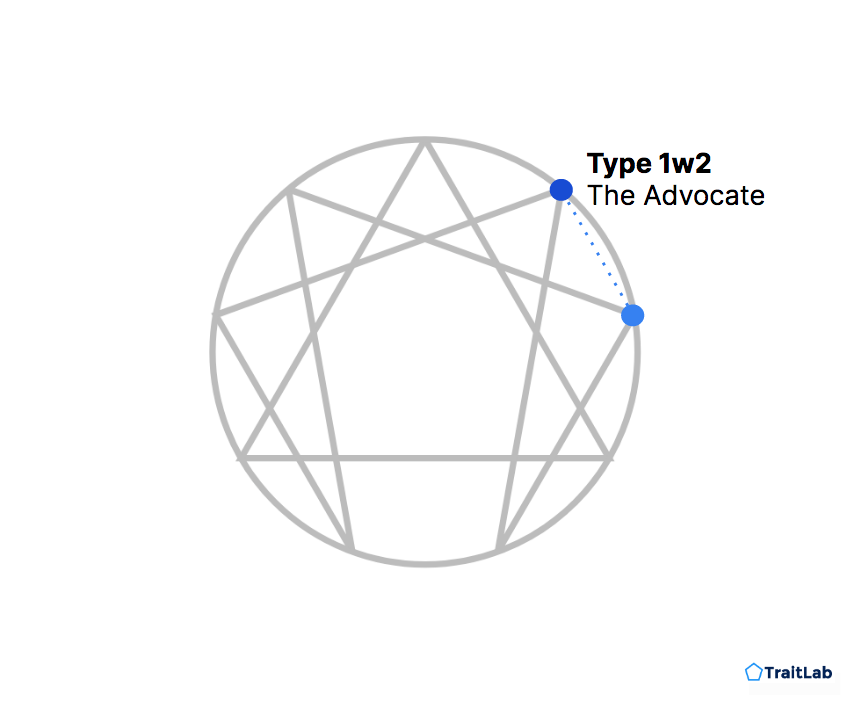
Type 1s with a 2 wing, or 1w2s, exhibit characteristics of Type 2: The Helper, including greater social enthusiasm, positive emotions, and empathy. Type 1w2s often use their self-discipline and systematic approach to aid others around them.
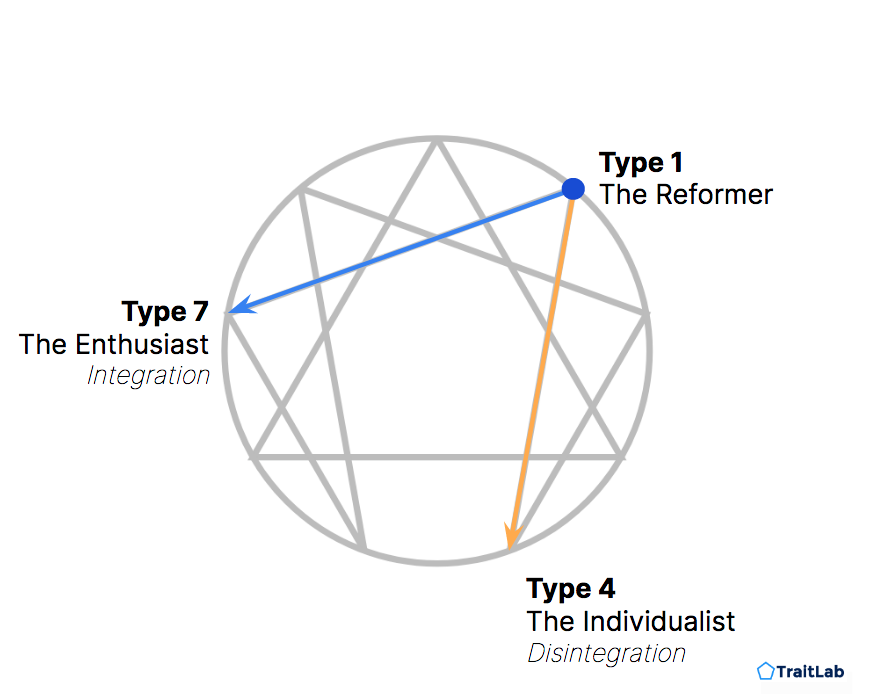
In times of health and security (i.e., integration), Type 1s shift towards Type 7: The Enthusiast. One indication of this shift is an increased openness to new ideas and feelings. Another sign of this shift is an increase in interpersonal curiosity and enthusiasm.
In times of stress (i.e., disintegration), Type 1s shift towards Type 4: The Individualist. Following this shift, Type 1s retreat inward and exhibit lower empathy, kindness, and interest in others.
Based on their distribution of personality traits, TraitLab estimates that roughly 17% of people would be classified as Type 1s.
In studies of personality structure, researchers often use a trait-based approach to describing the differences between people instead of using personality types. The most well-established method is the Big Five, which describes differences along five broad dimensions:
Personality types are far less precise than getting exact Big Five measurements, but knowing your personality type can give you a rough idea of where you fall on each dimension.
In the graph below, each dot is a Type 1, placed by where they fall on the Big Five dimensions. You can see that Type 1s can vary quite a bit on any single dimension.
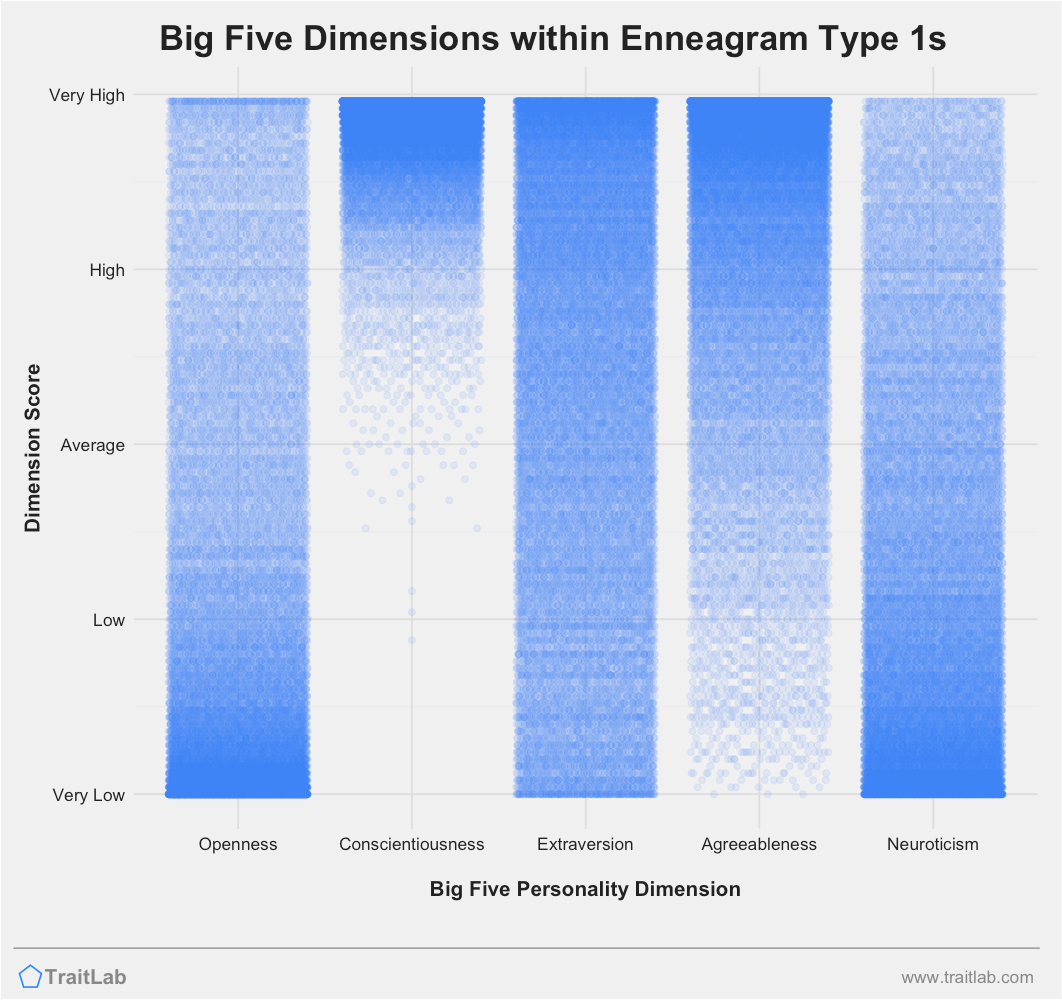
For example, on the Conscientiousness dimension, Type 1s tend to score much higher than average, so the High and Very High areas are very dark blue. However, there are still a few rare Type 1s on the low end of Conscientiousness.
Below, you can see more detail on how Type 1s score on each Big Five dimension.
Type 1s tend to score slightly lower on Openness to Experience, meaning they are often more conventional or traditional.
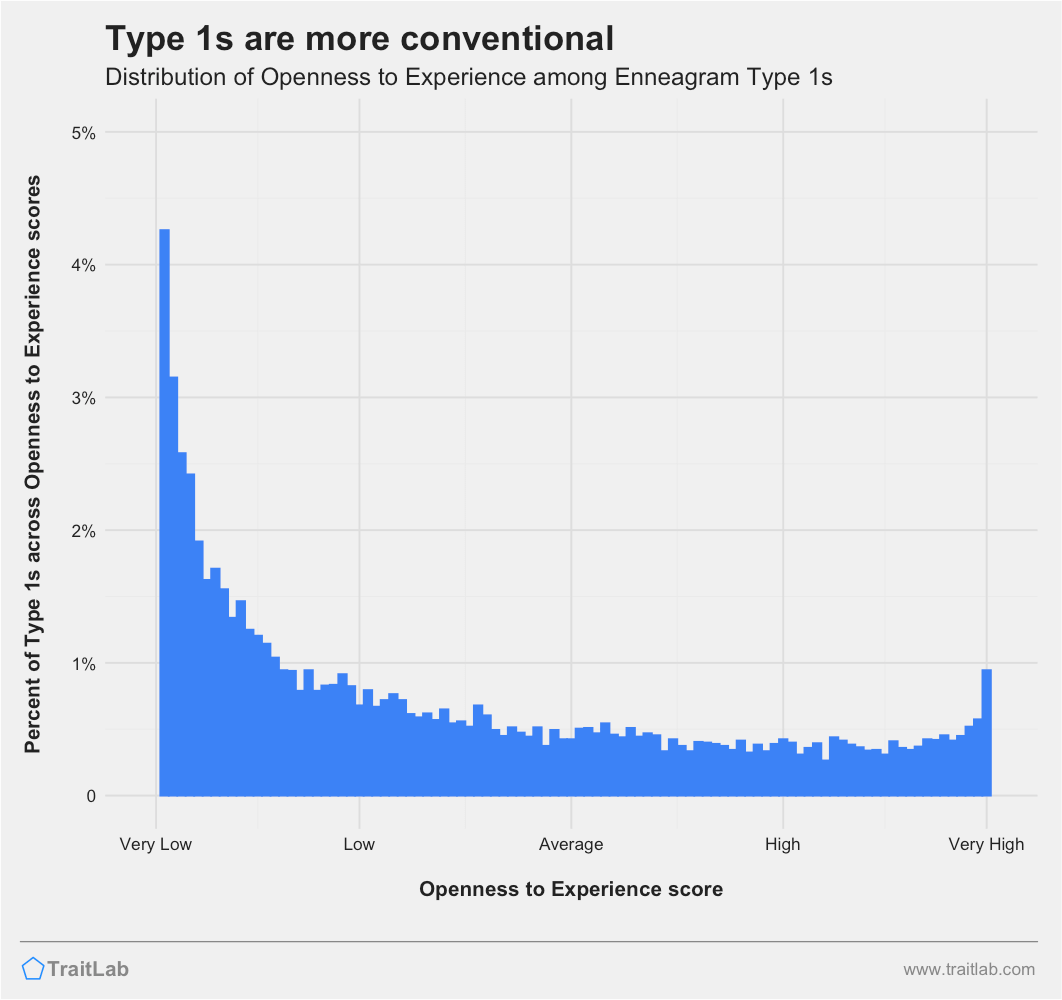
Openness to Experience describes your need for new information, feelings, and experiences.
Less open people prefer familiar ways of doing things. They are less interested in trying new things or seeking out new experiences. They also tend to be less eccentric and have more conventional tastes in hobbies, music, and reading material.
Highly open people have diverse interests, and they may feel a constant need to learn and try new things.
Type 1s typically score very high on Conscientiousness, with a large portion of Type 1s falling at the highest end of the scale.
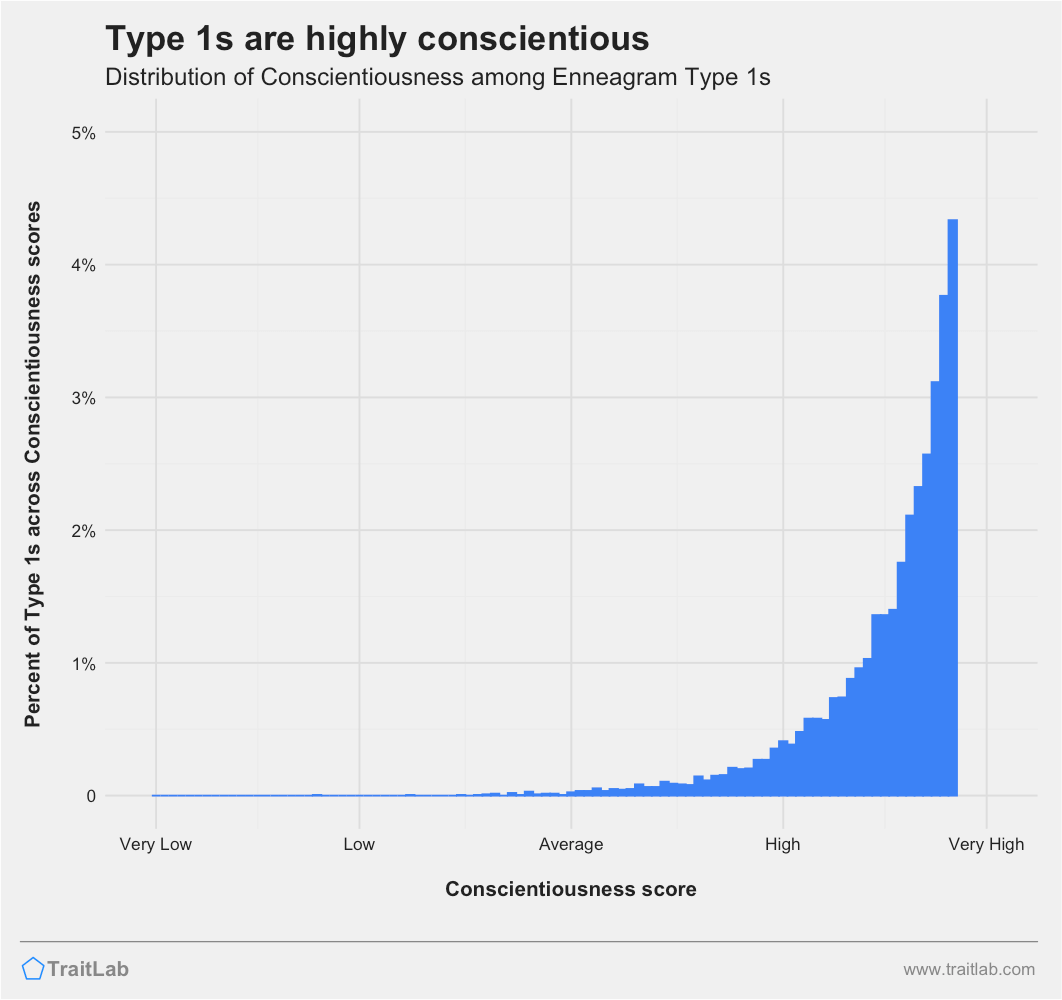
Conscientiousness describes our planning, organization, and regularity. Highly conscientious people, like most Type 1s, tend to create detailed plans to accomplish their goals and stick closely to them. They are less likely to be distracted by diversions or smaller short-term goals, and they excel at maintaining focus on the big picture.
Many Type 1s will have regular schedules and routines to ensure that they can efficiently make progress on multiple goals. They will have little tolerance for disorganization and chaos, and they will work diligently to create order out of a messy situation.
Most Type 1s are somewhat more extraverted. Extraversion describes our social enthusiasm, positive emotionality, and assertiveness.
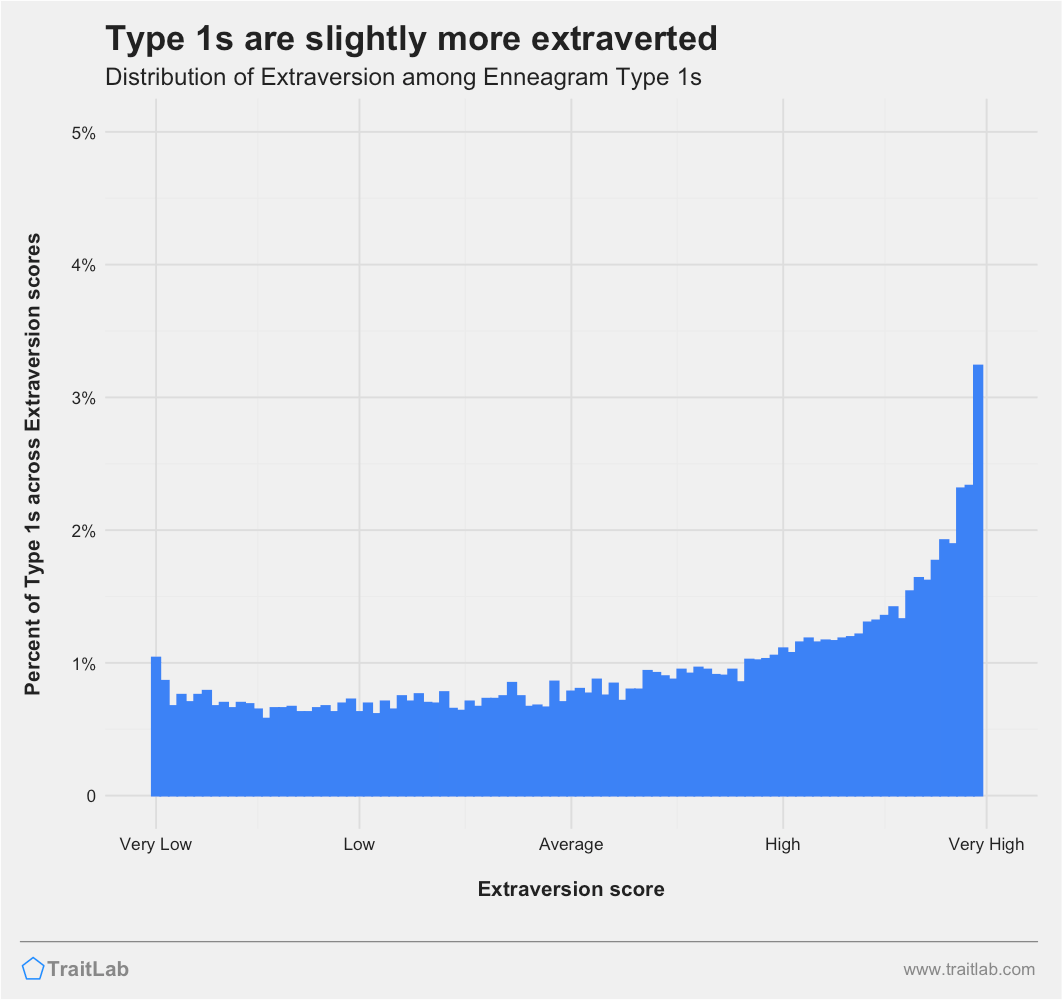
More extraverted Type 1s will naturally gravitate towards social engagement and generally show greater enthusiasm in social situations — smiling, laughing, and keeping the energy up and moving. They will be more likely to open up, share their point of view, and gently persuade others to see things their way.
The rarer, more introverted Type 1s will seem more emotionally muted and reserved compared to their extraverted counterparts. They will act and react more subtly in social situations, and they will occasionally need to withdraw into solitary activities. They are more likely to sit back and listen, and act more passively around others.
Type 1s tend to be more agreeable than most.
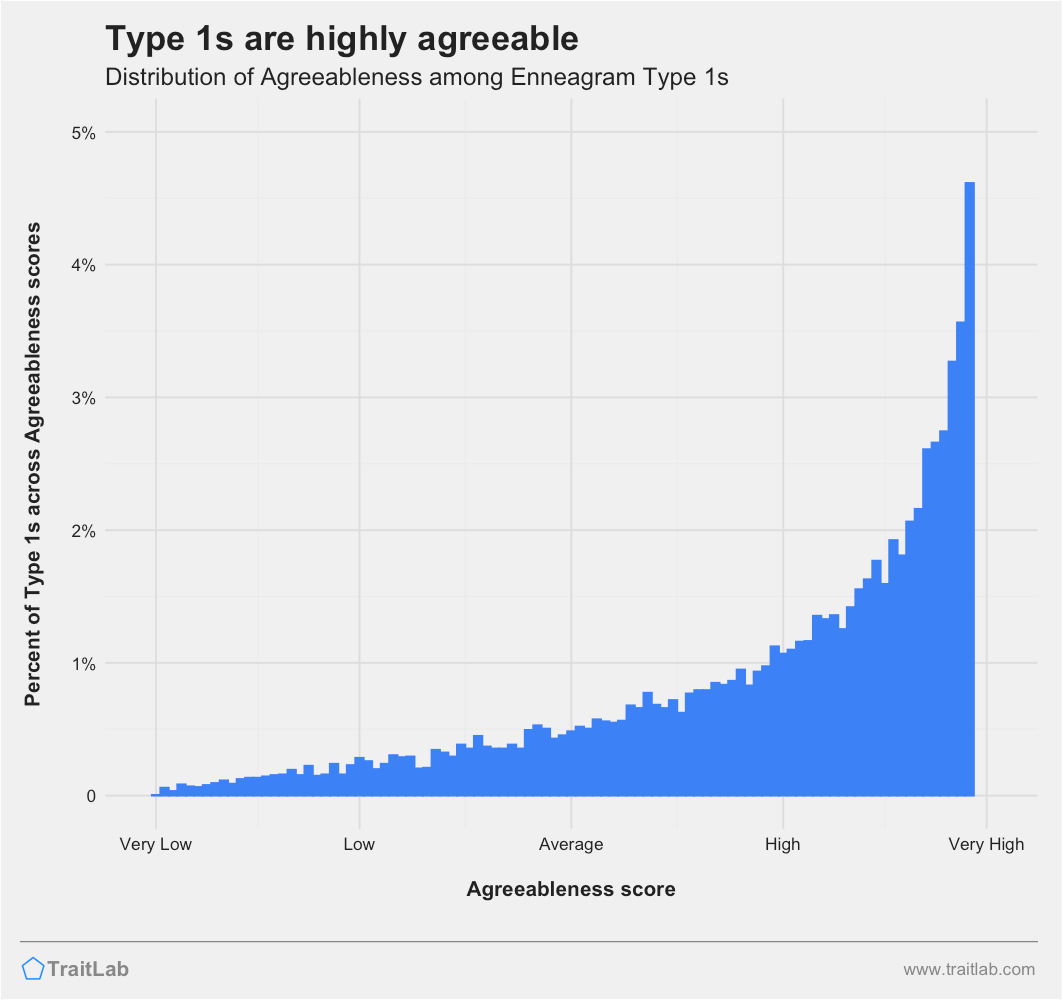
As a group, Type 1s are generally more agreeable, with many Type 1s falling at the extreme high ends of Agreeableness. Agreeableness describes tendencies to create and nurture positive relations with others, a general sense of trust in other people, and empathy — the capacity to sense and feel the emotions of others.
Highly agreeable people, like most Type 1s, are highly sensitive to interpersonal issues, and will try to minimize any negative impact their actions may have on other people. Type 1s are more likely to put off their own goals if it could potentially disrupt or harm a good relationship, and if a Type 1 senses distress or other interpersonal problems, they will naturally jump at the chance to comfort and resolve it.
While Type 1s also vary in their level of Neuroticism, most Type 1s fall on the lower, more emotionally stable end of the Neuroticism spectrum.
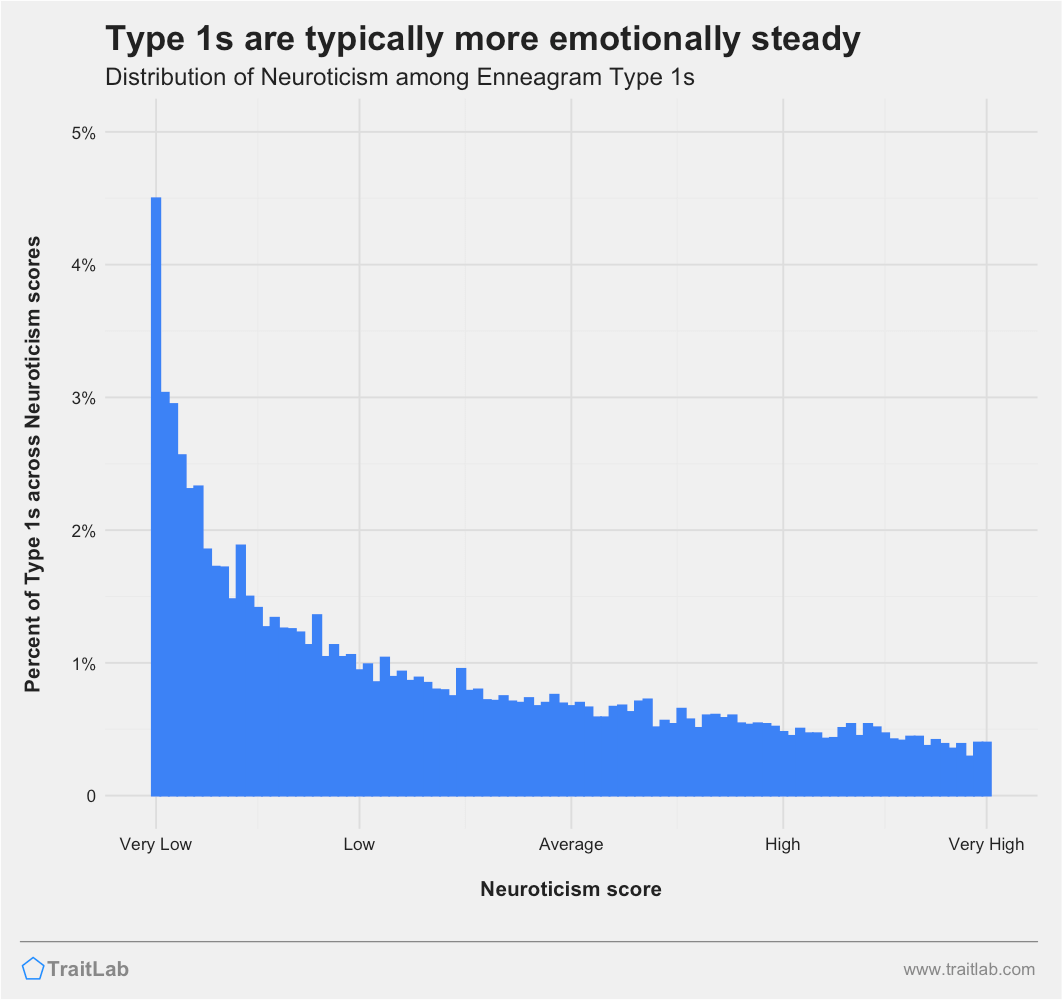
Neuroticism describes how we react to stress and our tendency to experience a variety of negative emotions. As most Type 1s are less neurotic or emotionally stable, they tend to have steadier, more predictable moods, and can more easily adapt to life’s sudden changes and disruptions.
Less neurotic people, like most Type 1s, generally experience less anxiety, anger, frustration, and sadness. They still experience these negative emotions, but less frequently and with less intensity than their more neurotic counterparts. Likewise, they ruminate less on bad experiences and are less likely to doubt and second-guess themselves, resulting in a calmer, more confident style of thinking through problems and decision-making.
Most personalities can’t be described perfectly by a single Enneagram type.
However, with TraitLab’s Enneagram test, you can see which of the nine Enneagram types is most similar to your personality.
For comparisons between Type 1s and other Enneagram types, visit any of the type pairings below: